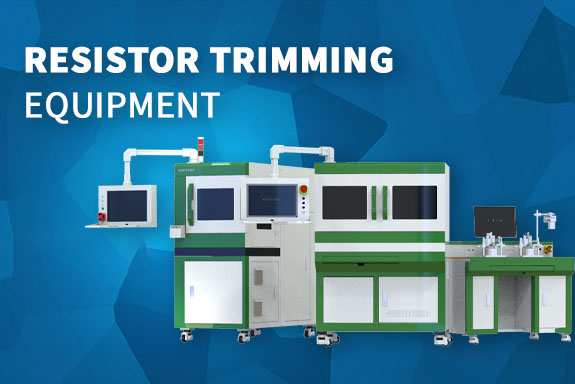Introduction to Resistor Technologies
Resistors are fundamental components in electronic circuits, playing a crucial role in controlling current and voltage levels. Among the various types of resistors, thick film and thin film resistors are widely used due to their unique properties and applications. This article delves into the applications of thick and thin film resistors, the processes involved in resistor trimming, and the technology behind laser trimming equipment.
Thick Film Resistor Applications
Thick film resistors are known for their versatility and cost-effectiveness, making them suitable for various applications. One of the primary uses of thick film resistors is in power electronics, where they handle higher power levels and can dissipate heat effectively. They are commonly found in automotive electronics, industrial automation, and consumer electronics.
Additionally, thick film resistors are used in circuits requiring high stability and reliability, such as in sensor applications and signal processing. Their ability to withstand harsh environmental conditions makes them ideal for military and aerospace applications, where durability is essential.
Thin Film Resistor Applications
Thin film resistors, on the other hand, are recognized for their precision and performance. They are typically used in applications where accuracy and stability are paramount, such as in medical devices, precision measurement instruments, and high-frequency circuits. Thin film resistors offer low noise and high temperature stability, making them suitable for RF applications and precision analog circuits.
In the field of telecommunications, thin film resistors are often employed in signal conditioning circuits due to their low drift characteristics. Their compact size and excellent performance characteristics also make them ideal for use in integrated circuits and miniaturized devices.
Resistor Trimming Circuit
A resistor trimming circuit is used to fine-tune the resistance values of components within a circuit. This process ensures that the resistors meet the required specifications for accurate performance. Trimming is especially important in high-precision applications, where even minor deviations can impact the overall functionality of the device.
Resistor trimming can be performed using various methods, including laser trimming, which allows for precise adjustments without altering the physical characteristics of the resistor. This technology is commonly employed in manufacturing processes to enhance yield and ensure product reliability.
Difference Between Thin Film and Thick Film Resistors
The difference between thin film and thick film resistors lies primarily in their construction and performance characteristics. Thin film resistors are made by depositing a thin layer of resistive material onto a substrate, allowing for tighter tolerances and better performance at high frequencies. In contrast, thick film resistors are created by applying a paste of resistive material onto a substrate and then firing it, resulting in a thicker layer.
In terms of applications, thin film resistors excel in high-precision environments, while thick film resistors are more suited for high-power applications. Understanding these differences helps designers choose the right type of resistor for their specific needs.
Thick Film Process
The thick film process involves several steps, including the preparation of a paste, screen printing, and firing. The paste is formulated using a mixture of resistive materials and a binder, which is then screen printed onto a substrate. After printing, the substrate is fired at high temperatures to create a stable resistive layer.
This process allows for the production of resistors with a wide range of resistance values and tolerances, making them suitable for various applications. The thick film technology is known for its robustness and ability to withstand environmental stresses.

Laser Trimming Equipment
Laser trimming equipment is essential for adjusting the resistance values of thick film resistors during manufacturing. This technology utilizes a focused laser beam to selectively remove material from the resistor, allowing for precise control over resistance values. The advantage of laser trimming is that it minimizes the impact on the resistor’s thermal and electrical properties, ensuring that performance remains consistent.
This equipment is widely used in industries that require high precision and reliability, such as telecommunications and aerospace.
Laser Resistor Trimming Machine
The laser resistor trimming machine is a specialized piece of equipment designed to perform trimming operations on resistors efficiently. These machines are equipped with advanced laser technology that allows for high-speed trimming with minimal heat generation. As a result, they are ideal for high-volume manufacturing environments.
In addition to providing precise trimming capabilities, laser resistor trimming machines also enhance productivity by reducing the need for manual adjustments and inspections. This automation leads to a more streamlined production process and improved product quality.
Conclusion
Understanding the applications and technologies behind thick film and thin film resistors is crucial for engineers and manufacturers alike. By recognizing the strengths and limitations of each type of resistor, along with the processes involved in trimming and adjustment, it is possible to design and produce more reliable electronic devices. As technology continues to advance, the role of resistors in electronic circuits will remain vital, driving innovation across various industries.
由用户投稿整理稿件发布,不代表本站观点及观点,进行交流学习之用,如涉及版权等问题,请随时联系我们(yangmei@bjjcz.com),我们将在第一时间给予处理。






